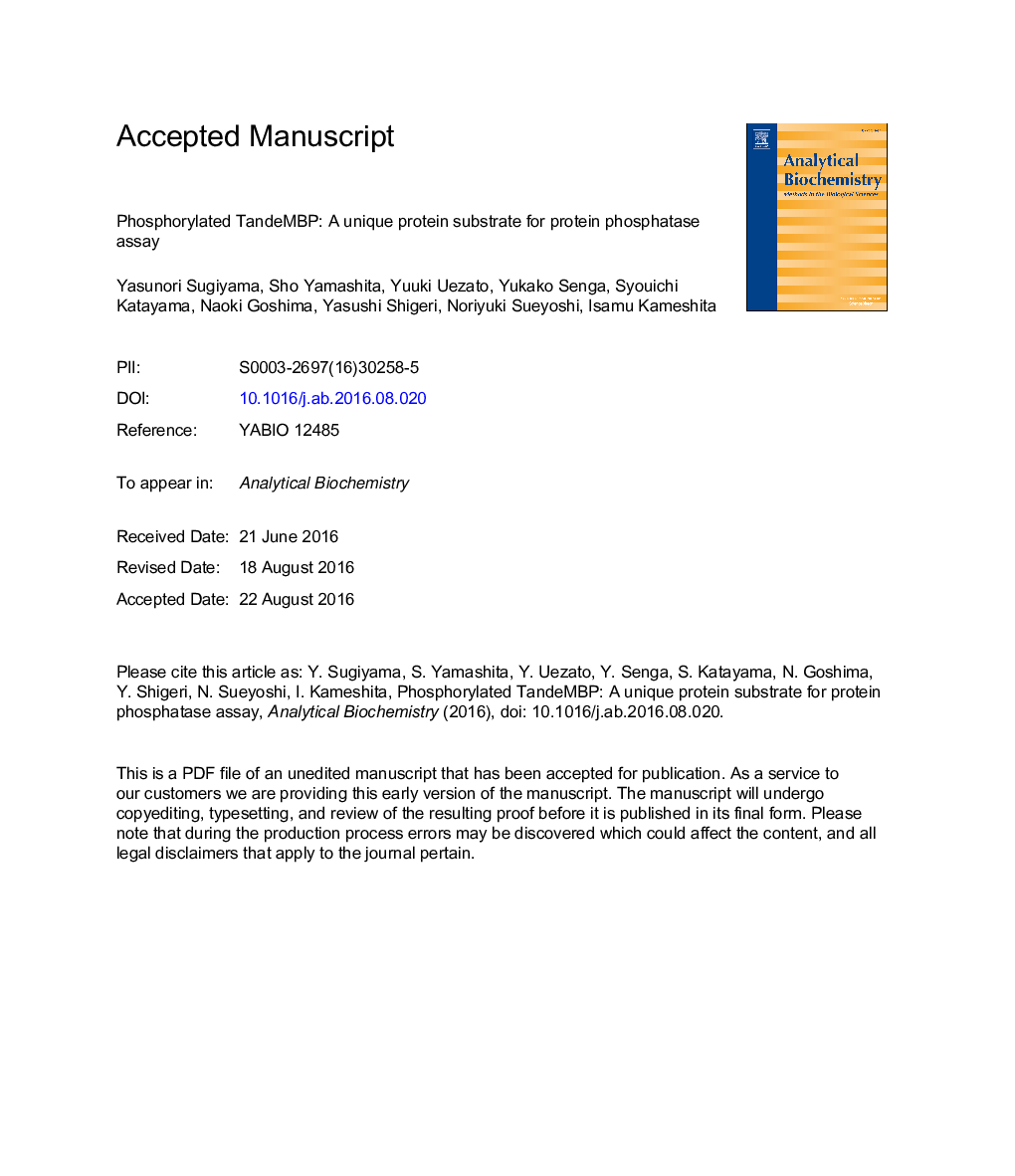| Article ID | Journal | Published Year | Pages | File Type |
|---|---|---|---|---|
| 7557277 | Analytical Biochemistry | 2016 | 30 Pages |
Abstract
To analyze a variety of protein phosphatases, we developed phosphorylated TandeMBP (P-TandeMBP), in which two different mouse myelin basic protein isoforms were fused in tandem, as a protein phosphatase substrate. P-TandeMBP was prepared efficiently in four steps: (1) phosphorylation of TandeMBP by a protein kinase mixture (Ca2+/calmodulin-dependent protein kinase Iδ, casein kinase 1δ, and extracellular signal-regulated kinase 2); (2) precipitation of both P-TandeMBP and protein kinases to remove ATP, Pi, and ADP; (3) acid extraction of P-TandeMBP with HCl to remove protein kinases; and (4) neutralization of the solution that contains P-TandeMBP with Tris. In combination with the malachite green assay, P-TandeMBP can be used to detect protein phosphatase activity without using radioactive materials. Moreover, P-TandeMBP served as an efficient substrate for PPM family phosphatases (PPM1A, PPM1B, PPM1D, PPM1F, PPM1G, PPM1H, PPM1K, and PPM1M) and PPP family phosphatase PP5. Various phosphatase activities were also detected with high sensitivity in gel filtration fractions from mouse brain using P-TandeMBP. These results indicate that P-TandeMBP might be a powerful tool for the detection of protein phosphatase activities.
Keywords
MBPPhosphatase assayCK1δProtein substratelambda protein phosphataseMUPDclkERK2DYRK1ApKaTCAIPTG4-methylumbelliferyl phosphateorthophosphoric acidtrichloroacetic acidisopropyl β-d-thiogalactosideextracellular signal-regulated kinase 2MEKProtein phosphataseMyelin basic proteincAMP-dependent protein kinasemitogen-activated protein kinase kinase
Related Topics
Physical Sciences and Engineering
Chemistry
Analytical Chemistry
Authors
Yasunori Sugiyama, Sho Yamashita, Yuuki Uezato, Yukako Senga, Syouichi Katayama, Naoki Goshima, Yasushi Shigeri, Noriyuki Sueyoshi, Isamu Kameshita,
